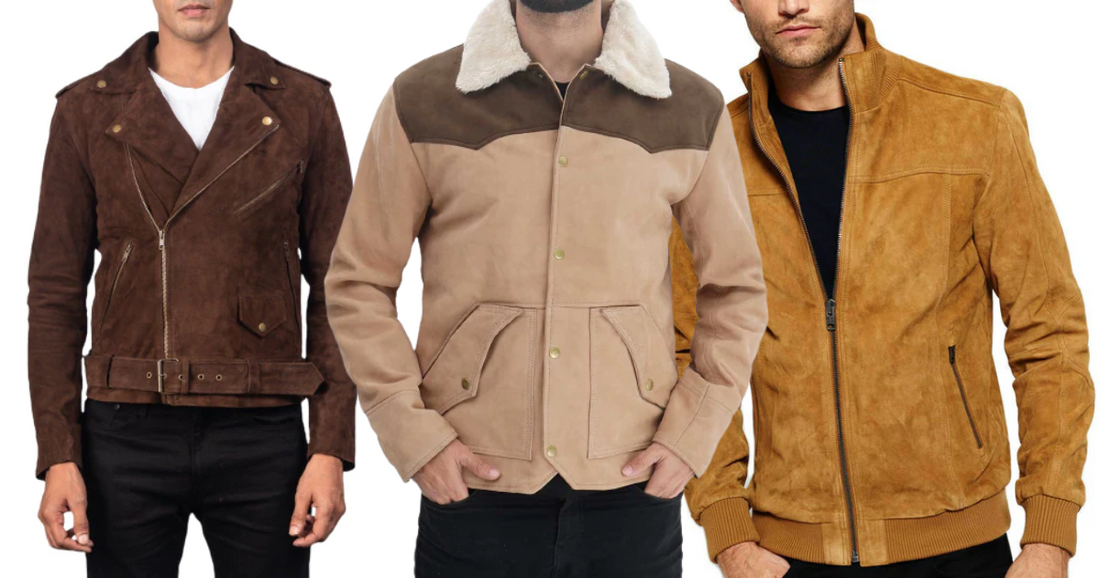
All You Need to Know About Suede Jackets
A Short History of the Suede Jacket
Suede is a significantly more recent invention; humans have been using animal skins to stay warm since prehistoric times. The word was originally used as recently as 1884, according to the Oxford English Dictionary. The term "gloves from Sweden" (gants de Suede) is derived from French. During the 1700s, Swedish tanners discovered that it was possible to turn defective hides inside out and utilize the napped underside. When the skin is split, the resultant leather is extremely supple and soft, making it ideal for making the exquisite soft gloves that the era's French nobility so much desired.
Concurrently, North American Indians, having perfected extremely advanced tanning techniques, were crafting buckskin coats—jackets made of reversed deer hide with a napped finish—that were unmistakably the ancestors of modern suede jackets. Due to its delicate nature and ability to be cut and used like fabric, suede gained popularity among haute couture designers in the 20th century. Suede finishes have a sensuous quality that elevates suede jackets above their regular wear status.
Ironically, since Jon Voight's character in Midnight Cowboy and Dennis Hopper's character in Easy Rider both wore fringed suede jackets, the jacket also evolved into a type of upscale hippy apparel. Cognac suede jacket are a distinctive and enjoyable addition to any wardrobe that made its way into popular fashion in the next decades.
What is Suede?
The inside of a tanned animal skin is called suede. Like the buckskin worn by Native Americans in North America, a tanned hide can be used with the napped, suede side on the outside, although this makes the garment considerably heavier than traditional suede. The resultant suede stone wash jacket is napped on both sides and is a considerably lighter and more malleable substance if the leather is split and the upper grain is removed. Suede may be manufactured from any hide, but the recommended skins are sheep, calf, pig, and deer since thicker hides, like cowhide, give a more harsher nap.
What is a Faux-suede Jacket?
Polyester microfibers are used to make faux-suede coats. They are more weather and stain-resistant and less expensive than real suede. They are well-liked by those who don't want to purchase animal goods. Polyester microfibers are a major cause of pollution and have disastrous effects on the environment. Faux suede cannot in any way be considered eco-friendly or biodegradable.
Suede Jacket vs Leather Jacket
Suede jackets are highly valued due to their luxurious texture, lightweight, and suppleness. They are not as robust as a leather jacket, but they are far more resilient than cloth. A suede jacket is a luxurious item that should only be worn sometimes, while a leather jacket is appropriate for daily usage and will last a lifetime. Suede is less waterproof and much more prone to staining than leather due to its high permeability.
Is a Suede Jacket Waterproof?
Although it has probably been demonstrated that wearing a suede jacket increases its water resistance, you shouldn't wear this type of clothing in the rain. Suede can never be rendered waterproof due to its high porosity, which gives it a luxurious feel.
Suede Jacket Durability
A suede jacket may last a lifetime with proper care, but it cannot withstand the same level of abuse as a high-quality leather jacket. A suede jacket is a luxury item, not an all-purpose utilitarian one. Although a suede jacket is more prone to stains and rips more easily than leather, it will not deteriorate with time as a fabric item would. See this page for information on suede jacket maintenance.
More Blogs:
- Top Stylish Jackets For Men
- Revolutionizing Professional Style and Security
- 7 Spring Jacket Trends to Wear In Mild Temperature Conditions
